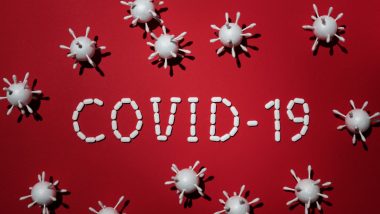Coronavirus is an infectious disease which has spread across the world. It spreads primarily through droplets of saliva or discharge from the nose when an infected person coughs or sneezes. At present, there is no treatment which can cure the disease while various clinical trials are evaluating potential treatments. Coronavirus is part of RNA viruses which can cause diseases in humans, mammals and birds. Coronaviruses constitute the subfamily Orthocoronavirinae. SARS-CoV-2 (Severe acute respiratory syndrome coronavirus 2) is the latest addition to a list of six other coronaviruses in the Orthocoronavirinae that can cause harm to people. How to Treat Coronavirus at Home? Twitter User Narrates How She & Her Family Recovered From the Disease Before They Got Their COVID-19 Positive Results!
Meaning of Orthocoronavirinae
The true name of this pandemic is orthocoronavirinae which is a Latin name. The virus has a crown-like appearance under the electron microscope, which is why the viruses are named after the Latin word corona, meaning 'crown' or 'halo'. Hence, pragmatically, the virus is called Coronavirus as the appearance of the virus is similar to a crown.
Subdivision of Orthocoronavirinae
The subfamily Orthocoronavirinae is classified into four CoV genera: Alpha-, Beta-, Delta- and Gammacoronavirus. Two coronavirus of the alpha genera, HCoV-NL63, and HCoV-229E, and four coronaviruses from the beta genera, HCoV-OC43, HCoV-HKU1, SARS-CoV (or SARSCoV-1) and MERS-CoV, complete the list. Betacoronavirus genus is further separated in five subgenera (Embecovirus, Hibecovirus, Merbecovirus, Nobecovirus and Sarbecovirus). What to Consider if You Have Kids and Grandparents Living at Home Amidst COVID-19 Scare!
According to the European Centre for Disease Prevention and Control, an agency of the European Union, various levels of environmental contamination were found in rooms of COVID-19 patients. A Chinese hospital during the COVID-19 outbreak, SARS-CoV-2 was detected in environmental samples from intensive care units (ICU) dedicated to COVID-19 care. SARS-CoV-2 was also detected on objects such as the printers used by patients, desktop keyboards and doorknobs. The virus was detected most commonly on gloves. Survival of the coronavirus is expected to be higher in the untreated water of rivers, lakes and freshwater pools, in comparison with survival in swimming pools and the sea as the presence of viral inhibitors such as salinity and chlorine is less.
Viral RNA of SARS-CoV-2 has been detected by quantitative RT-PCR methodology in wastewater in countries, including Belgium, the Netherlands, Sweden, and the United States. These RNA fragments are assumed to originate from symptomatic, pre-symptomatic or asymptomatic individuals that shed the virus into the wastewater. Positive test results from wastewater in the community of the catchment area of a sewer treatment plant. African Americans Most Likely to Say a Family Member or Close Friend Has Died of COVID-19: Survey.
As the coronavirus or known as COVID-19 has spread around the globe, it has been found that the virus affects different organs and systems in the body, including the nervous system. ICTV announced “severe acute respiratory syndrome coronavirus 2 (SARS-CoV-2)” as the name of the new virus on 11 February 2020. This name was chosen because the virus is genetically related to the coronavirus responsible for the SARS outbreak of 2003. Although the viruses are related, the two viruses are different.
(The above story first appeared on LatestLY on Jun 16, 2020 07:05 PM IST. For more news and updates on politics, world, sports, entertainment and lifestyle, log on to our website latestly.com).













 Quickly
Quickly


